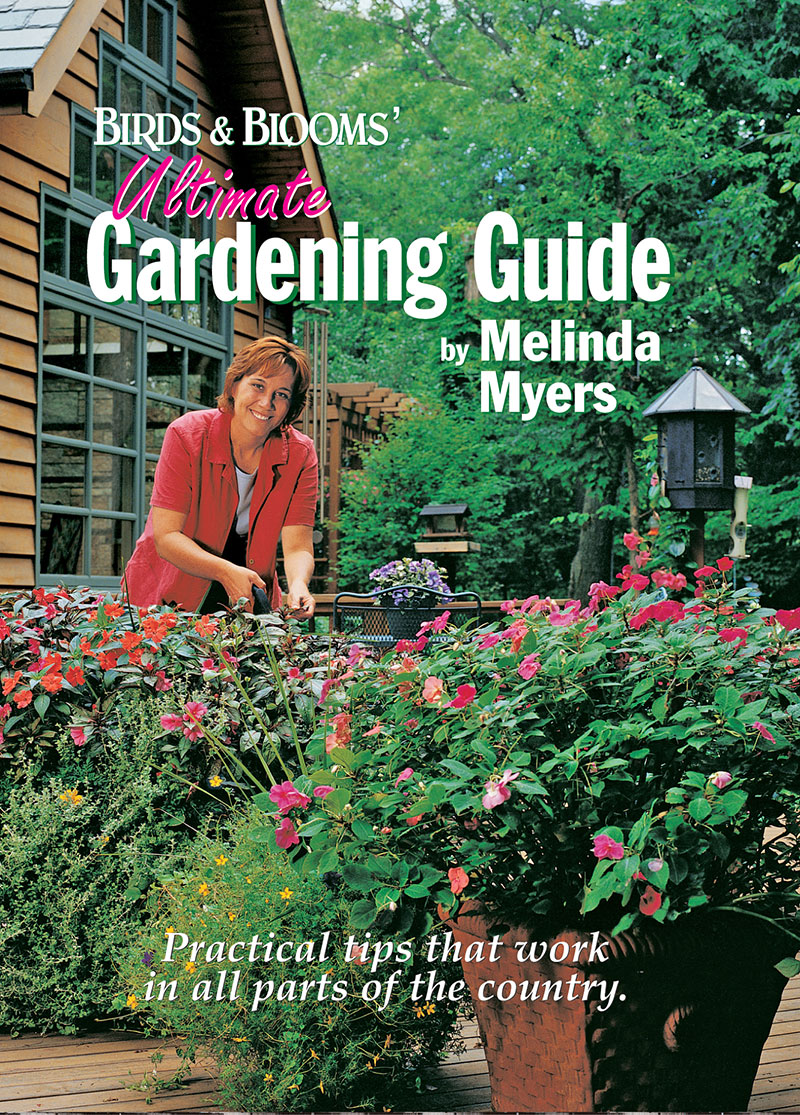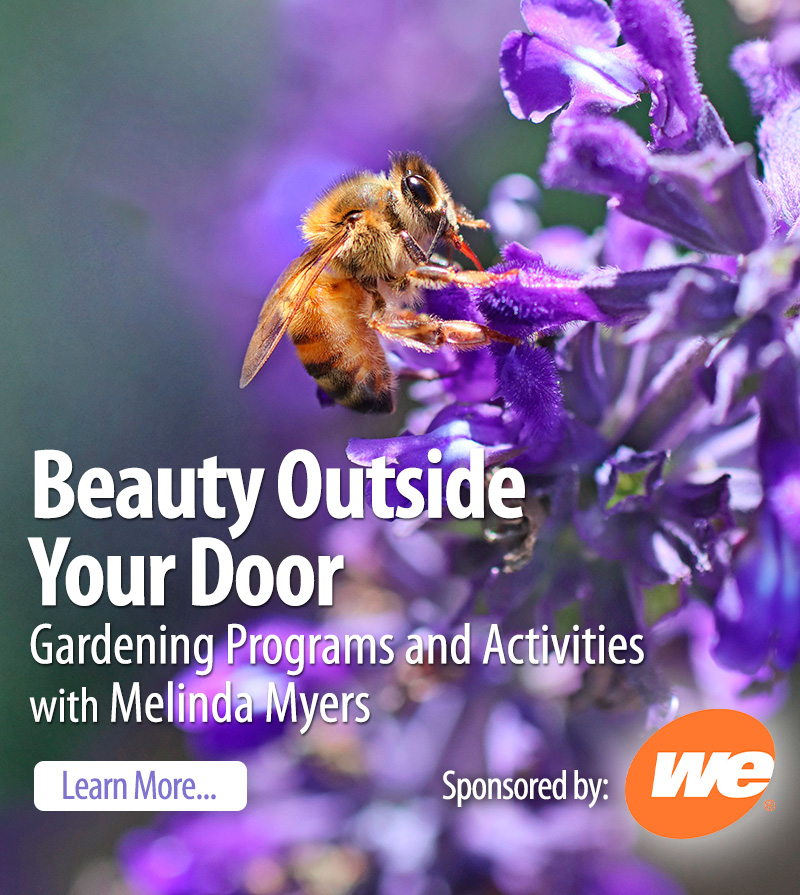
October
Flowers & Ornamental Grasses
Flowers & Ornamental Grasses
- Reduce and eliminate many future pest problems by removing and destroying weeds, insect infested and diseased plant leaves and stems.
- Leave healthy disease and insect-free perennials stand for winter to increase hardiness and provide homes for overwintering beneficial insects.
- Mark the location of late emerging perennials like hardy hibiscus, balloon flower and butterfly weed to avoid accidently weeding them out in spring.
- Protect tender annuals from frost by covering them with floating row covers or sheets when frost is in the forecast.
- Extend your garden enjoyment by adding pansies, ornamental kale and other fall annuals to gardens and containers.
- Southern gardeners can apply a slow release fertilizer, like Milorganite, when planting winter hardy annuals.
- Dig and divide peonies you want to move after the leaves have yellowed or been killed by the frost.
- Dig and divide perennials that have outgrown their location, failed to flower, flop open or died out in the center.
- Keep watering thoroughly and as needed until the ground freezes. Make new plantings, evergreens and moisture-loving plants a priority.
- Stop deadheading perennials so they harden off for winter and form seedheads for you and the birds to enjoy.
- Take 4-inch cuttings of annual vinca, geraniums, coleus and other annuals you want to overwinter indoors.
- Move hibiscus, Mandevilla and any other tropical plants you plan to save indoors before the first frost.
- Dig, cure and move cannas, dahlias, and elephant ears that are not hardy to your region, indoors for winter.
- Plant spring flowering bulbs when the night temperatures are consistently between 40 and 50 degrees until the ground freezes. Those in the far south need to select bulbs that need minimal chilling or purchase precooled bulbs.
- Shred fall leaves and use them as mulch over the soil surface in perennial flowerbeds.
- Once your annual flower gardens are done for the season, shred and dig fall leaves into the top 8 to 12 inches of soil to add organic matter and nutrients.
- Add shredded leaves and other pest-free plant debris to your compost pile. These will eventually turn into nutrient rich compost.
- Test the soil of new and struggling gardens now. You’ll have needed information for preparing your garden for the next growing season.
Fruits, Vegetables & Herbs
Fruits, Vegetables & Herbs
- Harvest grapes, apples and pears when mature. Pick melons, pumpkins and winter squash when full size and the rind is firm.
- Continue harvesting cool season crops like broccoli, cabbage and Brussels sprouts that thrive in cooler temperatures and tolerate frost.
- Northern gardeners can leave carrots, turnips and parsnips in the garden for winter storage.
- Create a beautiful and edible fall container garden with ornamental vegetables and fall flowers that tolerate cooler temperatures.
- Extend the growing season by planting short-season and frost-tolerant plants to the vegetable garden and using row covers and cold frames as needed.
- Pick any remaining tomatoes, including mature green tomatoes before the first killing frost to ripen indoors.
- Leave asparagus stems and leaves intact for winter. These will help catch the snow that makes a great winter mulch.
- Apply frost protection in late afternoon when the danger of frost is forecast. You’ll often add a few weeks of enjoyment to the season.
- Move Rosemary, bay and other herbs that aren’t hardy in your region indoors for the winter.
- Plant garlic cloves in properly prepared soil.
- Start an indoor herb garden from seeds or cuttings.
- Weed, remove and destroy any weeds, insect-infested or diseased leaves and stems at the end of the season to reduce future pest problems.
- Add shredded leaves and other pest-free plant debris to your compost pile. These will eventually turn into nutrient-rich compost.
- Once your annual vegetable gardens are done for the season, shred and dig fall leaves into the top 8 to 12 inches of soil to add organic matter and nutrients.
- Test the soil of new and struggling gardens now. You’ll have needed information for preparing your garden for the next growing season.
Groundcovers & Vines
Groundcovers & Vines
- Plant groundcovers in hard to mow areas, between steppers or under trees and shrubs to save time hand trimming.
- Plant vines on fences and trellises to create private spaces in the landscape and screen unwanted views.
- Cover groundcover plantings with netting as soon as the tree leaves begin to fall. Remove the leaf covered netting and compost the leaves.
- Fall is a great time to test new gardens and struggling areas in the lawn and landscape.
Indoor & Holiday Plants
Indoor & Holiday Plants
- Move any remaining houseplants that summered outdoors to their winter home indoors.
- It’s also time to move plants like hibiscus, mandevilla or any that are not hardy in your location, indoors before the first frost or temperatures drop to harmful levels.
- Expand you houseplant collection. Select plants suited to your indoor growing conditions and your schedule.
Lawns
Lawns
- Continue to mow your lawn high and for as long as it continues to grow in fall.
- Fertilize WARM season lawns with a low nitrogen slow release fertilizer like Milorganite in early October or when overseeding with ryegrass.
- Fertilize COOL season grasses between mid-October and Thanksgiving (before the ground freezes) with a low nitrogen slow release fertilizer like Milorganite.
- Northern gardeners can plant cool season grass seed in bare areas of the lawn damaged by summer heat or pests.
- Southern gardeners can overseed the lawn with ryegrass for a greener winter lawn.
- Monitor northern lawns for dollar spot and rust diseases.
- Shred fall leaves as you mow the lawn. Leave them on the lawn as they add organic matter and nutrients to the soil.
- Add shredded leaves and other pest-free plant debris to your compost pile. These will eventually turn into nutrient-rich compost.
- Fall is a great time to test the soil when establishing a new lawn or managing one that is not performing well.
Trees, Shrubs & Roses
Trees, Shrubs & Roses
- October is a great time to plant most trees and shrubs. The soil is warm and air is cool, reducing the risk of transplant shock.
- Water new plantings, moisture-loving plants and evergreens thoroughly and as needed until the ground freezes.
- Fall, after the leaves drop, is the second best time to transplant shrubs and small trees.
- Fertilize trees and shrubs in need of a nutrient boost in fall after the leaves drop.
- Yellow and brown needles all along the trunk of evergreen trees and shrubs is a normal occurrence called season needle drop.
- Cold weather gardeners should stop deadheading roses so they will harden off for winter. They will form rose hips for you and the birds to enjoy.
- Allow shrub roses to stand for winter to increase hardiness. Northern gardeners should wait to protect tender roses until after a week of consistently freezing temperatures.
- Avoid pruning evergreens in fall. Exposing the tender inner growth increases the risk of winter damage.
- Start installing animal protection now. Fencing, scare tactics and repellents or a combination of these can help protect your plants from hungry critters this winter.
- Fall is a great time to remove invasive plants like buckthorn and honeysuckle shrubs from the landscape.
- Shred fall leaves and use them as mulch over the soil in perennial flowerbeds.
- Use shredded leaves to increase the organic matter and nutrients in annual flower and vegetable gardens.
- Add shredded leaves and other pest-free plant debris to your compost pile. These will eventually turn into nutrient-rich compost.
Categories
Upcoming Live Events
& Webinars
April 27, 2024
Ridges & Rivers Book Festival
Viroqua, WI
Register now
April 28, 2024
Flowering Trees and Shrubs
Ebert's Greenhouse Village, Ixonia, WI
May 1, 2024
FREE WEBINAR
Ornamental Fruits and Vegetables
Register now
May 4, 2024
Garden U 2024
New Richmond, WI
Register now
May 9, 2024
FREE WEBINAR
How to Plant Your Rain Garden
Register now
May 11, 2024
Ask The Plant Doctor Q & A
Ebert's Greenhouse Village, Ixonia, WI
May 12, 2024
Ask The Plant Doctor Q & A
Ebert's Greenhouse Village, Ixonia, WI
May 18, 2024
Ask The Plant Doctor Q & A
Ebert's Greenhouse Village, Ixonia, WI
June 1, 2024
Selecting, Planting, Pruning and Caring for Hydrangeas
Ebert's Greenhouse Village, Ixonia, WI
June 5, 2024
FREE WEBINAR
Under-Appreciated Pollinators
Register now
WATCH ON-DEMAND WEBINARS
Learn More










